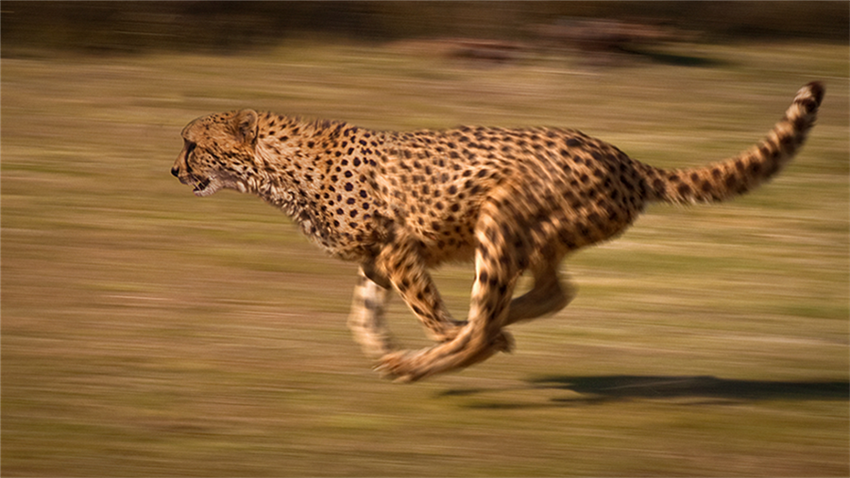Bananas, Cheetahs, and Investing

Diversification increases resiliency
There is not a more important concept for investors to understand and employ in their investment portfolios. Given all the adverse events that have the potential to create market volatility and risk today, there has never been a more important time to build resiliency
We all know that investment diversification is vital to long-term investment success, but sometimes looking at a familiar topic from a different direction can deepen our appreciation and understanding of its importance. For this purpose, I will turn to bananas and cheetahs to answer the question: what happens in the natural world when diversification is lacking?

I will never forget the first time I ate a banana that did not come from a grocery store. I was in a small village in Thailand and the banana was grown nearby. It was one of those little tiny bananas with thin skin and it was absolutely delicious. It was outrageously sweet, and I wondered: why can’t I buy this kind of banana in American grocery stores?
That was 20 years ago, and I hadn’t thought about that banana until my daughter chose genetics as the topic for her recent science project. Among the books and articles, she gathered were some about the dangers of decreasing genetic diversity in the foods we eat.
Bananas are the prime example of the vulnerabilities created by a lack of genetic diversity. The banana that we all recognize as the standard grocery store banana, the Cavendish, is currently threatened with extinction at the hands of a fungus called Panama Disease. The Cavendish was not always the standard. The last standard grocery store banana, the Gros Michel, was wiped out by Panama Disease in the 1960s.
The reason that bananas are so vulnerable to disease and extinction is that there is very little diversity in the banana gene pool. A single disease can wipe out the entire Cavendish variety and, given that it is the only currently viable commercial variety, the end of the Cavendish means the end of the banana for most American consumers.
Like bananas, cheetahs also suffer from a lack of genetic diversity due to a mass extinction event 12,000 years ago. This lack of diversity makes the entire cheetah species very vulnerable to a single adverse event. We are one communicable disease away from losing the wild cheetah forever.
The plight of the banana and the cheetah can provide a very important lesson for investors
The lesson is that diversity is the best way to achieve resilience against adverse events. If bananas enjoyed greater genetic diversity, a single disease like Panama Disease may wipe out some banana varieties, but it’s likely that some varieties would be resistant and that resistance would be bred into future varieties. The same is true of cheetahs. This is the essence of resilience.
Every investment portfolio we build is designed to be resilient against adverse events.
Given the introduction to this article, it will come as no surprise that our primary tool for achieving resilience against adverse market events is diversification. Unlike bananas and cheetahs, we don’t draw all our genes from one pool and we don’t have all our eggs in one basket.
Our portfolios contain thousands of stocks and thousands of bonds. The stocks represent companies in every industry, in nearly every country with a well-regulated public stock market, and of every size. Our bond investments vary in time to maturity and are issued by creditworthy companies, municipalities, governments, and supranational organizations. We also invest in income-generating assets like real estate and these investments are also diversified across a broad spectrum of real estate types.
Because we cannot predict the future, we prepare appropriately for a range of market outcomes
While our assessment of the likelihood of those outcomes varies, our commitment to diversification does not. With the exception of aggressive growth stock portfolios that are designed for risk-tolerant investors looking to maximize long-term returns, all of our portfolios contain assets that will very likely increase in value or be unaffected by adverse events during a given time period. Although we don’t always know when, where, and how adverse events will occur, we can be certain that they will occur. This is why we take great care to build broadly diversified, balanced portfolios to be resilient against market reactions to global events.
If you find yourself concerned about post-COVID economic imbalances, supply chain disruptions, labor market problems, inflation, deflation, or strategic competition with China, rest assured that your Baker Boyer portfolio is built for exactly these kinds of events. Unlike the banana and the cheetah, resilience is built into the DNA of every one of our financial plans and every one of our investment portfolios. If you have questions on this or any other topic, ask us. Answering these types of questions and talking about these concepts is our favorite part of our jobs.




